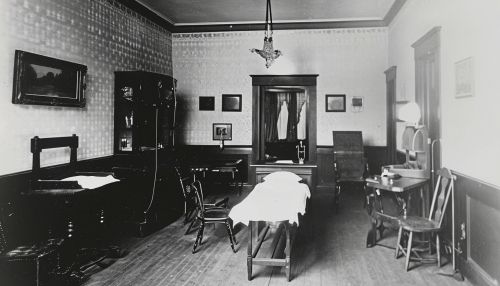Margaret Sanger
Early Life
Margaret Louise Higgins was born on September 14, 1879, in Corning, New York. She was the sixth of eleven children born to Michael Hennessey Higgins, a stonemason, and Anne Purcell Higgins, a devout Catholic. Margaret's father was an Irish immigrant and freethinker who instilled in her a strong sense of independence and a commitment to women's rights.


Margaret's mother, Anne, had a total of 18 pregnancies in 22 years, and her frequent childbirths and miscarriages took a toll on her health. Anne Higgins died of tuberculosis at the age of 50, a death that Margaret attributed to her mother's frequent pregnancies. This early exposure to the dangers and difficulties of childbirth and the toll it took on women's health had a profound impact on Margaret and influenced her future work in birth control and women's rights.
Education and Early Career
Margaret Higgins attended Claverack College and Hudson River Institute before enrolling in 1900 at White Plains Hospital as a nurse probationer. In 1902, she married architect William Sanger and gave up her education. Over the next ten years, Margaret Sanger gave birth to three children.
The family moved to New York in 1910, where Sanger's work as a visiting nurse in the city's impoverished Lower East Side spurred her interest in birth control. She was deeply affected by the poverty and suffering she witnessed, particularly the toll of frequent pregnancies, miscarriages, and self-induced abortions on women's health.
Birth Control Advocacy
In 1912, Sanger began writing a column for the New York Call entitled "What Every Girl Should Know." Distributing a pamphlet, "Family Limitation," to women, Sanger risked imprisonment under the federal Comstock Law, which banned the dissemination of "obscene" materials, including information about contraception.
In 1914, Sanger launched The Woman Rebel, a feminist magazine that advocated for birth control. The magazine was prosecuted for obscenity, and rather than face a possible five-year jail sentence, Sanger fled to England.
While in England, Sanger was introduced to the concept of "birth control" (a term she later coined) and various contraceptive methods. She returned to the United States in 1915, determined to promote and distribute information about birth control.


In 1916, Sanger opened the first birth control clinic in the United States, in Brooklyn, New York. The clinic was raided by the police, and Sanger and her staff were arrested. Despite facing numerous legal challenges, Sanger continued her advocacy, founding the American Birth Control League in 1921, which later became the Planned Parenthood Federation of America.
Later Life and Legacy
Sanger's advocacy for birth control faced significant opposition, but her work led to significant changes in public attitudes and law. Her efforts contributed to the 1936 U.S. court decision that allowed doctors to distribute birth control information and devices.
In the 1950s, Sanger underwrote the research necessary to create the first human birth control pill, known as Enovid. She raised $150,000 for the project.
Margaret Sanger died in 1966, a year after the Supreme Court (in Griswold v. Connecticut) legalized birth control for married couples. Her legacy lives on through the Planned Parenthood Federation of America and her significant contribution to women's reproductive rights.
